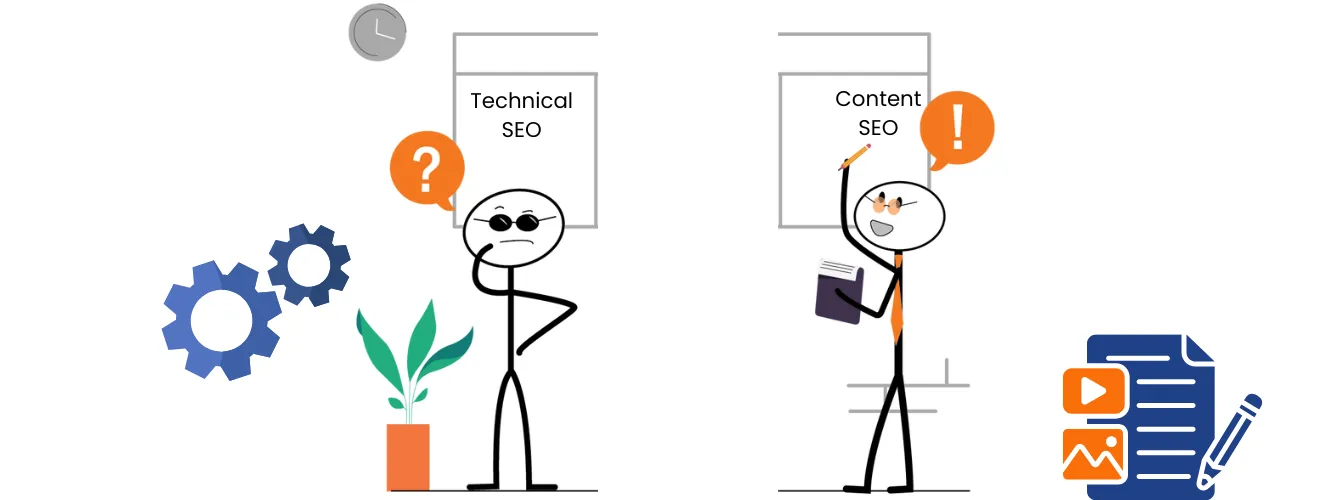Is your brand being left out of AI-generated answers in Google’s AI Overview, ChatGPT, or Gemini? If your business isn’t showing up in zero-click search summaries, you’re missing out on a powerful form of AI-driven visibility, authority, and engagement.
By 2025, over 70% of search queries may be answered directly by Generative AI search assistants—bypassing traditional rankings and links. This shift to AI-first indexing and conversational summaries demands a new approach: AI Search Engine Optimization.
Generative AI tools don’t just crawl your content—they extract machine-readable content from high-trust, structured, and entity-optimized sources. They prioritize brand mentions, entity-based ranking signals, and structured content optimization that aligns with the Knowledge Graph. If your site isn’t built with these AI expectations in mind, your brand risks invisibility.
In this guide, you’ll discover 8 proven strategies for Generative Search Optimization (GSO)—a new SEO framework focused on increasing your brand’s presence in AI summaries. From schema markup and content structure to backlinks and AI visibility strategy, you’ll learn how to align your digital presence with the preferences of ChatGPT, Gemini, Perplexity, and Google SGE.
Why Generative AI Mentions Matter for Brands?
Generative AI tools like ChatGPT, Gemini, Perplexity, and Google’s AI Overviews are changing how users interact with search.
AI-generated answers often appear above traditional search results — meaning being mentioned in these overviews is a new digital visibility frontier.
Mentions in AI summaries build trust, authority, and traffic without needing a top 10 Google ranking.
How Generative AI Picks Content for Overview Answers?
- Relies on large language models (LLMs) trained to select high-quality, trustworthy content.
- Prioritizes well-structured, topical authority, natural language, and entity recognition.
- Prefers content that's frequently mentioned, fresh, visually enhanced, and structured with schema.

Understanding and aligning your content with these criteria significantly improves your chances of being featured in AI-generated answers.
These are the critical elements that can improve your brand’s visibility in Generative AI search summaries
8 Proven Strategies to Get Your Brand Featured in Generative AI Search Results
Generative AI shows the summarised results for the queries to the searcher. Brand mention in the Generative AI overview is essential because it enhances visibility, results, trust, and drives more traffic to your brand.
While picking up the content from the resources, Google AI Model considers the following factors:
1. Optimize Content Structure and Readability
It analyzes and summarizes concise, well-structured content that directly answers user queries. AI prefers clear formatting, bullet points, and sources that demonstrate authority and relevance. If the content is well structured, easy to read, and scannable, AI may interpret and use it in its search results and reference your information.
Clear formatting and structure of the content make it easy for AI Chatbot crawlers. How can we optimize the content?

How can content structure be optimized and readability increased?
- Headings: Use a clear H1–H3 hierarchy to organize your content.
- Bullets and Numbers: Break content into short paragraphs, bullets, and numbered lists.
- Clear and Direct Answers: Before diving into the details, write down the direct answer to the queries. It is a similar strategy to SEO for featured snippets. The answer should be concise but clear.
- Clear and Direct Answers: Start answers with concise, direct responses, similar to featured snippet style.
- Tables and Stats: Include tables and comparison charts to improve AI summarization.
- Short Paragraphs: Short sentences improve readability and understanding. Use short sentences and divide them into short paragraphs to make it easy to access your content.
2. Use Conversational and Query-Matched Language
Generative AI favors content written in a natural, human tone. It looks for answers that resemble everyday conversation and match the phrasing of long-tail or question-based queries. It doesn’t rely on the keyword-rich content, unlike traditional search engines. It shows the results that fulfil the user’s query and intention.
AI Chatbot likes the user’s intended content and phrasing, which looks like a human conversation. Clear, relevant and contextual answers have better results on AI than the over-technical, keyword-stuffed, and rigid content.
How to optimize for conversational AI?
- Natural and Human Conversation: Write in a natural, human tone instead of keyword-stuffed text.
- Long-Tail and Query-Based: Answer long-tail, question-based queries to match how users search.
- FAQs and Q&A: Incorporate FAQs and Q&A format for better AI extraction.
- Semantic SEO Approach: Focus on semantic SEO — using related terms, synonyms, and topic clusters.
- Leverage AI-generated summaries: AI often extracts the information from a reasonable written conclusion, summaries and intros. Optimize these areas accordingly.
3. Build Topical Authority and Demonstrate Expertise
As Google rewards E-E-A-T content to rank, a Generative AI engine similarly depends on high authority and trusted brands in a specific niche. Establishing E-E-A-T in generative AI requires consistent publication of expert-driven, in-depth resources and recognition through citation in AI search answers.
These sources must have expertise and topical authority in the relevant topic. AI doesn’t extract the information from random pages and show it on the AI overview. It has an apparent inclination towards high authority and expert sources.
How to Build Topical Authority?

- In-Depth and High-Quality Content: Create in-depth, comprehensive content that covers a topic thoroughly.
- Cover Topic thoroughly: Publish supporting articles to form content clusters.
- Get cited on authoritative websites: Get cited on authoritative sources, expert round-ups, and industry news.
- Expert Discussion: Participate in podcasts, webinars, and expert panels to enhance brand recognition.
4. Strengthen Brand Mentions and Earn Backlinks
AI Overview heavily depends on the brand’s mention. Unlike traditional search engines, which rely on linking to other websites, AI leans on entity mentions and recognition.
If your website is listed on high authority websites, blogs or news articles, there is a certain chance that you will get mentioned in the generative AI Overview.
GEO engines prefer the brands frequently mentioned on the industry’s high authority sites. How can you strengthen your brand to be mentioned in GEO?
How to strengthen your brand mentions for GEO:
- Mentioned on Authoritative Publications: Focus on digital PR, guest posting, and being quoted on trusted sites.
- Digital PR and Guest Post: Get listed on industry directories, round-ups, and authoritative platforms.
- Discuss About Your Brand: Engage in community conversations (forums, social media, webinars) where your brand name can be naturally mentioned.
5. Use Structured Data and Schema Markup
Generative engines like Google’s AI Overview (GEO) rely heavily on structured data to extract and understand web content. By implementing schema markup, you not only improve your visibility in traditional SERPs but also enhance your brand’s eligibility for inclusion in AI-generated responses.
Structured data helps LLMs and chatbots accurately interpret your content, increasing your chances of being recognized as a trusted entity in the Google Knowledge Graph and featured in AI snippets across platforms.
Did You Know?
Google’s AI Overview and Bing’s Copilot prefer structured content with schema markup for faster and more accurate summarization.
Use free tools like Merkle’s Schema Generator or RankRanger to generate FAQPage, Article, and VideoObject schema without code.
How to optimize Structured Data for GEO?
- Implement Schema Markup: Add FAQPage, Article, HowTo, and Video schema to help AI interpret your content.
- Key Entities Mark-Up: Tag key entities like your brand name, location, and services.
- Use of Metadata and ALT Text: Use ALT text and metadata on images and media assets.
- Add structured lists and tables: Format key data into tables and bullet lists to aid AI extraction.
6. Keep Content Fresh and Updated
Generative AI Model examines the data in real-time. Up-to-date and accurate content gets a higher score in the eyes of AI. If your content is outdated, AI will likely deprioritize it in favor of fresher, more relevant sources.
Generative AI tools often prioritize up-to-date content. Regularly updating your key pages signals relevance and increases your likelihood of being featured in AI overviews.
How do you update and add fresh content regularly?
- Update Key Pages and Blogs: Update older blog posts with new stats, expert insights, and relevant updates.
- Use Updated Schema Markup: Refresh schema markup to reflect changes.
- Modify Older Content: Convert static content into visual formats like infographics or videos.
- Monitor AI Search Results: Monitor AI-generated search results to spot opportunities or gaps.
7. Leverage Multimedia for Multimodal Optimization
AI Searches and LLM now process the videos, images and other modes of content other than text. It increases the online appearance if you have the content in multiple formats.
Create content in images, videos, texts, infographics and podcasts and publish it. AI may mention your content in any relevant, valuable, authoritative format. It will help in online visibility.
How to do content optimization in Multimodal?
- Alt tags and MetaData: Use ALT tags, filenames, and metadata to improve AI comprehension.
- Optimize Video Content: Add images, videos, infographics, and podcasts to diversify your content.
- Schema for Multimedia: Use the videoObject and ImageObject schema markup to help the AI Chatbot understand your non-text content.
- Multimedia Content in Blogs: Embed visuals inside blog posts to make content more engaging and AI-friendly.
8. Boost User Engagement and Positive Sentiment
LLM models and AI engines not only consider the content quality for featuring in the AI responses. They assess the users’ information data regarding the content and then decide to feature it.
AI analyzes the metrics like user engagement, feedback, views, time, clicks, social interactions, sentiments and many others. If the user’s engagement with the brand content is positive, then AI can feature it.
How to improve sentiment & engagement signals for GEO?
- Social Sharing and Discussion: Encourage social sharing across platforms like LinkedIn, Reddit, and YouTube.
- Promote Positive Brand Sentiment: Use audience engagement metrics (e.g., time on page, shares, sentiment) as signals of trust for AI systems.
- Engage with Audience: Actively respond to comments, reviews, and questions across forums and platforms.
- Earn User-generated Content: Cultivate positive brand sentiment through UGC, testimonials, and reviews.
Quick Checklist: How to Get Your Brand Mentioned in Generative AI
- Structure content with H1–H3, bullets, and tables
- Use a conversational tone and long-tail keywords
- Focus on FAQs and Q&A formats
- Build topical authority and publish supporting articles
- Earn backlinks and brand citations from authoritative sources
- Use structured data and schema markup
- Keep content fresh and regularly updated
- Use visual content (videos, diagrams, podcasts) with metadata
- Encourage engagement and positive sentiment across platforms
Final Thoughts
To get featured in AI-generated responses, your brand must go beyond traditional SEO. You need clear, structured, engaging content optimized for AI comprehension, not just algorithms. By aligning your Generative AI SEO Strategy with what LLMs prioritize—trust, relevance, and usability—you unlock the new frontier of search visibility.
Partnering with a Generative AI Optimization expert can give your brand a crucial advantage in this evolving landscape. These specialists understand how LLMs like ChatGPT, Gemini, and Perplexity select and surface content, and can tailor your website structure, language, and digital footprint to align with AI preferences.
From implementing schema markup and enhancing topical authority to crafting AI-friendly language and earning strategic brand mentions, an expert can accelerate your visibility in AI Overviews—ensuring your brand appears where users are now discovering answers first.








